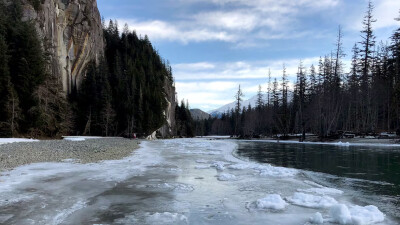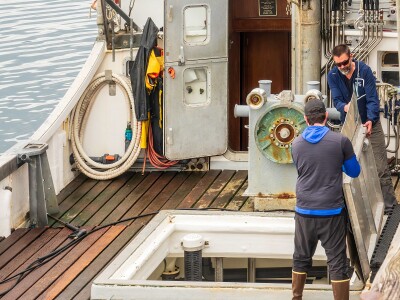Stability through change
Based on U.S. Coast Guard reporting.
Boats that are modified and refurbished with equipment added to transform them into commercial fishing vessels often are put into operation without determining carrying capacity or determining stability with a formal assessment. Any skipper assigned to the converted vessel may not be completely familiar with its characteristics or limitations. So weather and sea conditions may test the vessel and the crew's mettle on the open water.
A house-forward 43-footer with a fiberglass hull had a 3 1/2-foot draft under normal loading. The vessel had been used by a government agency for surveys and training, and it was built for use in shallow and somewhat protected waters. It was equipped with twin shafts, props and rudders in two tunnels.
The previous operator wasn't aware that any safety inspections or stability tests had been performed on the vessel. He tried to limit operations to conditions under 25-knot winds and 10-foot swells. He felt the vessel had quick rolling motion, and sometimes heavily in a short, steep chop.
The new owners made some modifications, and added some equipment to make it ready for crabbing off the Washington and Oregon coasts. An unknown amount of ballast was added forward. They installed a mast with podium lights and an aluminum boom and hydraulic winch on the starboard side, but did not add stabilizer poles.
To accommodate hauling pots, a portion of the starboard gunwale was cut out. Two fish holds were placed under decks aft of amidships. New glassed-over wooden hatches were installed over the holds.
After all the work had been completed, the owners were unsure how the vessel would ride as a converted crabber. It took on approximately 90 pots, at about 100 pounds each, with some of them stowed in the fish holds. The pots secured on deck may have been stacked as high as 10 feet.
The skipper and crew got underway for a crabbing trip on their newly outfitted vessel on a mid-December afternoon. The sky was overcast with winds at 15 to 20 knots; the air was 43 degrees, and the visibility was 5 to 10 miles with occasional snow showers.
At the bar at the river's mouth the tide was ebbing at about 10 knots; wave heights were about 7 feet with a period of 11 seconds; swell height was about 16 feet with a period of 13 seconds and the water temperature was 48 degrees. The Coast Guard had issued a warning that recreational and uninspected passenger vessels should not attempt crossing the bar until conditions subsided.
Witnesses talked about how rough the bar looked, and they were surprised this boat was going to cross it. Reports indicate the vessel made it across the bar, but a big wave pushed the bow up in the air. When the bow came down, the crabber rolled slightly and then another wave hit the side and flipped it over. The life raft floated free, but no crew members surfaced. Their bodies were recovered later.
Lessons learned
The primary mistake in this casualty was choosing to cross the bar that day. But other choices and actions may have contributed to this incident.
The new owners added equipment to the vessel and modified it. This would have caused a change to the center of gravity and, therefore, the stability of the vessel. No stability assessment was performed on the vessel, and thus no stability booklet was available to the skipper. Without this type of assessment, no one could know how many pots and other weight could safely be loaded and under what conditions the vessel could operate and retain stability. An analysis and stability calculation conducted after the accident with available information indicated wave heights in excess of 13 feet could cause the vessel to lose stability and capsize.
The skipper had never taken this vessel crabbing before. He likely didn't know how the vessel was going to ride, particularly with the modifications and additional equipment and gear. Weather conditions would have accentuated any problems. Additionally, the skipper may have had local knowledge of the coastal area, but it was reported that he did not have much experience on this particular river bar.
It is seldom that we can point to one single factor as the cause of a casualty. That's why it is so important to know and understand your vessel's particulars, the environmental conditions, and your personal limitations. Any changes to any boat can affect its seaworthiness, carrying capacity and stability. Weather and wave conditions can and will test the limits of any boat's handling and stability. Be aware, be safe, fish safe!






